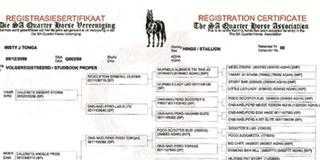
Photo: Pxhere
Equines are creatures of habit. If you watch the behaviour of wild zebras, you will notice that they follow a routine.
Every morning, at the same time, the herd will move down to drink at the waterhole. Then they will go out to graze, doze at midday when the sun is hot, then move to the safety of the hills as the sun starts setting.
Over the many centuries since horses were first domesticated, riders have designed management routines to fit in with this equine need for an ordered way of life.
They are herd creatures
The other factor contributing to the behaviour of horses under saddle is that they are herd creatures and feel a lot more secure when they are with other horses.
It takes a great deal of training to convince a horse that they can rely entirely on their rider to keep them safe and secure when they are away from the herd.
Horse breeders and trainers cope with high-spirited equine athletes by keeping them in groups and maintaining a routine.
During training, youngsters are gradually accustomed to each sleeping in an individual stable at night, but they can put their heads over the stable door during the day and see their stable mates.
The whole herd is fed breakfast as the dawn breaks, their rugs are removed, and they are groomed while they eat.
Then they are taken out for exercise or put in paddocks, while the stables and water buckets are cleaned. At lunchtime they are fed again, then may be taken out afterwards for further training.
In the late afternoon, horses are brought in to stables containing full hay nets and water buckets. They are left to nibble on hay until just before sunset, when they are rugged up, leg bandages put on as needed, and fed a supper consisting of oats or another well-balanced carbohydrate and protein concentrate.
In well-run riding schools, training sessions, lessons and outrides are fitted into this routine. Those who teach horses and riders to interact safely are aware that horses behave better in groups.
Even when teaching a horse to accept a saddle and bridle, training is done in a small ring in sight of other horses. Lessons and outrides are done in groups.
If a single horse is being ridden or trained, it is mainly at the riding school, close to other horses. This routine keeps horses calm.
However, a strong bond between an individual horse and rider, which will allow the horse to feel secure away from other horses, can be built up patiently over time.
This bond must be very strong to prevent a horse from tossing off the rider and galloping off to join the herd when they are brought in at suppertime. Taking a horse off to a show, away from its stable mates, makes it feel anxious and very likely to behave badly.
At smaller shows it is fairly easy to take a group of horses and keep them together in sight of the main arena, each with a hay net to nibble on.
At larger shows, the horses are stabled a long way from where they compete and can become anxious and difficult as soon as they are away from their companions.
This is particularly difficult in dressage, show jumping or reining, where a single horse and rider compete at a time. Even during endurance rides, it is better and easier to ride in a ‘bunch’ than alone.
Dr Mac is an academic, a practising equine veterinarian and a stud owner.












